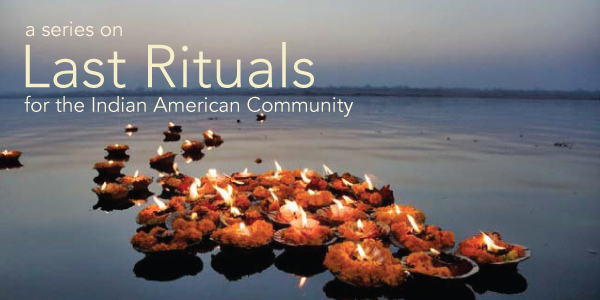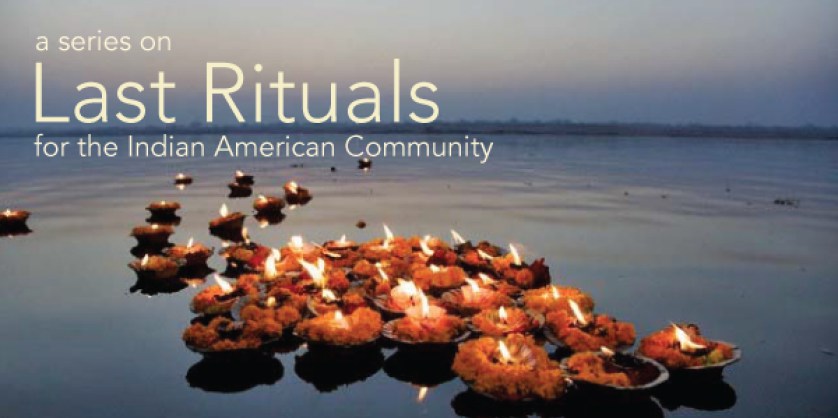(Editor’s note: This is the first in a series on last rituals being published by INDIA New England News in collaboration with the Desai Foundation. This series is adapted from Last Rituals for the Indian American Community: A Resource Guide, which was originally published by the Desai Foundation. This series will appear every Monday.)
Death is one experience throughout history and around the world that is common to mankind. Nothing—money, mediation techniques, emotions, or power—can prevent it. Dealing with death is a life experience no one wants to face and hence most people do not plan or think about preparing themselves for this situation.
The cost, types of services, religious and social rituals, and many other related details for a funeral, as well as what follows for those who are left behind, are therefore handled when people are thrust into crisis. As hard as it is to accept, death always follows birth. Death is the only thing in life that is 100% guaranteed. Indian society has been taught by its scriptures to accept death as a natural and universal experience; it is not to be feared. In the Bhagavad Gita, the lord, incarnated as Krishna, preaches/informs Arjun by bringing to his attention this truth.
“To one who is born, death is certain and certain is birth for the one who has died. Therefore, for what is unavoidable, then should not grieve.”
 Indian society follows a variety of practices according to the religion, region of origin, caste, social status, and family tradition. People deal with death, related services, and grief in different ways. The experience is difficult and, at times, trying. There is no right way to cope with death. The experience is also related to preparation, culture, religious and social backgrounds, mindset and support systems that the family has at its disposal.
Indian society follows a variety of practices according to the religion, region of origin, caste, social status, and family tradition. People deal with death, related services, and grief in different ways. The experience is difficult and, at times, trying. There is no right way to cope with death. The experience is also related to preparation, culture, religious and social backgrounds, mindset and support systems that the family has at its disposal.
This series and resource guide for last rituals is in no way meant to replace your personal beliefs, traditions, and desires as much as it is to make the experience for family and friends who want to help a bit easier. It is intended to be a guide to make available resources to those who care and wish to make the experience for their loved ones smoother. The guide is not advocating or endorsing any of the content, but providing it for your consideration.
The Indian-American society in the U.S is growing, maturing, and experiencing many life cycle events (sanskars) that inevitably follow almost everyone. Sooner or later everyone will experience the loss of loved ones. The Indian-American society is rich with history and culture of religious and social rituals that every family likes to follow.
Last rituals vary by region, origin, religion and family tradition. Many of us do not have a source of knowledge or resource available to help us prepare and know what to do under these circumstances. This lack of information along with primarily western and Christian last rituals followed in the U.S, makes it difficult for a family to know what to do during the difficult and trying time of death. Many hospitals and nursing homes, in their effort to adopt multicultural processes for last rituals, are looking for information on how Indian-Americans need to be cared for during their last days if death should occur at their institutions.
Over the last few years, while attending funerals as well as social conversations, many people brought up a need to develop a resource book that will cover multitudes of needs Indian- Americans have for last rituals. The society is helpful during the trying and difficult circumstances of death and what follows for those who are left behind.
Several members of society showed interest in volunteering their services to prepare a resource guide for last rituals. So with the help of those volunteers, and a summer intern, the Desai Foundation embarked on the project to make this guide available to all who would like to have it as a free service.
The Desai Foundations’ objective is to be all inclusive by covering a variety of rituals that are practiced by various communities in our society depending upon religion, region of origin, and traditions. In trying to achieve this goal, the Desai Foundation contacted houses of worship for various religions, religious and community leaders, hospitals, and funeral homes and their associations. The foundation checked websites and other available written sources and asked many to contribute sections of this guide.
This resource guide is the culmination of many volunteers and institutions who worked hard and provided information. The Desai Foundation, along with contributors hope that this is a great beginning to provide resource guides during difficult times of before, during, and after death.








